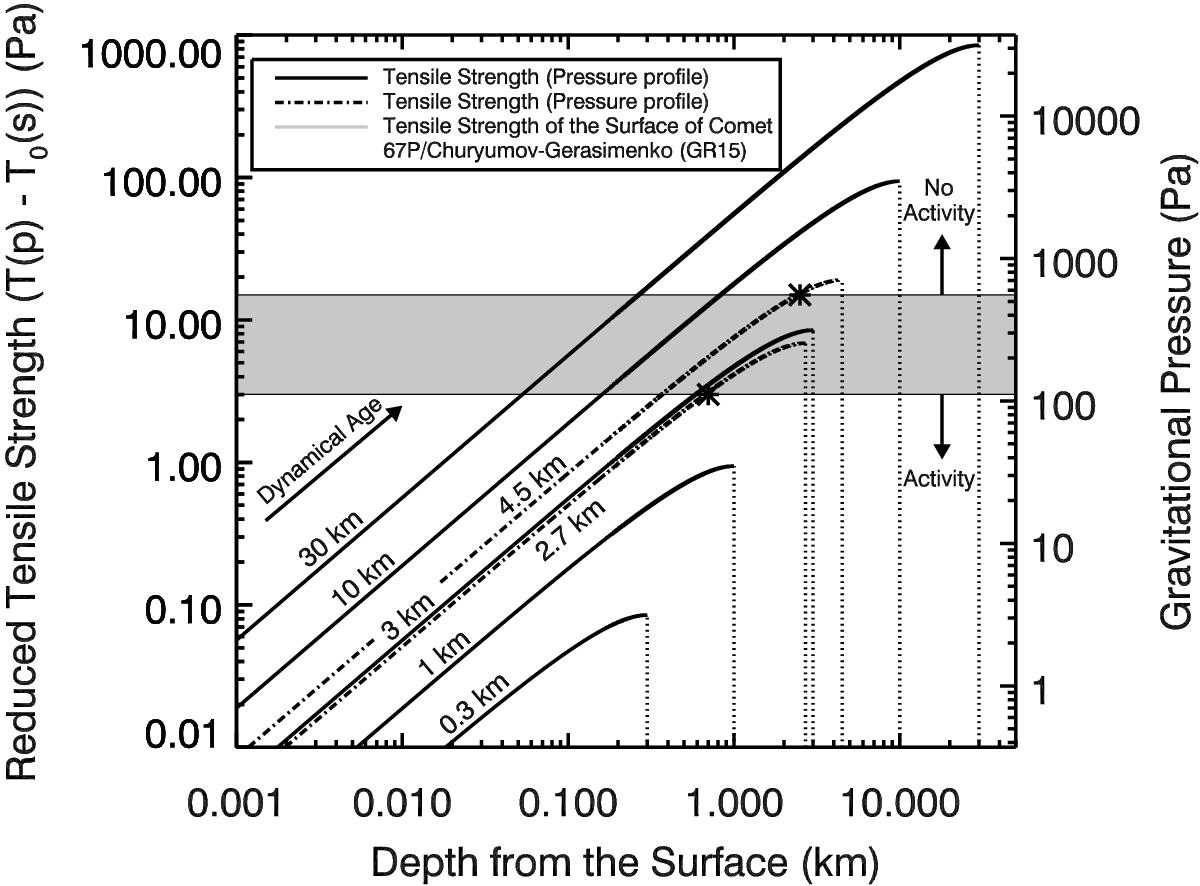Fig. 2

Memory-effect-induced increase in tensile strength (left y-axis) and hydrostatic compression (right y-axis) of the dust aggregates in a primitive body formed by gravitational collapse as a function of depth measured from the surface. The calculations were performed for five different initial radii of 0.3 km, 1 km, 3 km, 10 km and 30 km, respectively (solid curves). The tensile strength of the dust aggregates is derived by the fact that 2.7% of the applied compression strain is remembered by the dust aggregates as tensile strength. For comparison, the tensile strength of the surface material of comet 67P/Churyumov-Gerasimenko (3 Pa–15 Pa) is shown by the grey area (Groussin et al. 2015). To explain the presence of dust-active objects with 2 km in radius and a surface tensile strength equal to the values measured for comet 67P/Churyumov-Gerasimenko, initial radii between 2.7 km and 4.5 km are required (dash-dotted curves; see main text for details). Objects below the grey area can always be active, while inactive bodies are located above. When dust removal from the surface takes place, the bodies develop along the line labelled dynamical age.
Current usage metrics show cumulative count of Article Views (full-text article views including HTML views, PDF and ePub downloads, according to the available data) and Abstracts Views on Vision4Press platform.
Data correspond to usage on the plateform after 2015. The current usage metrics is available 48-96 hours after online publication and is updated daily on week days.
Initial download of the metrics may take a while.


